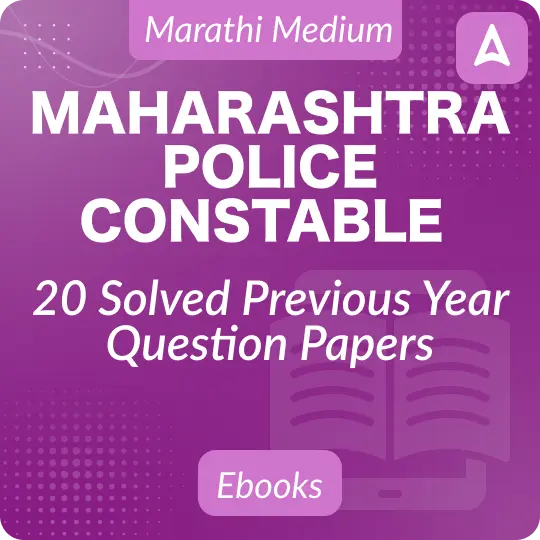Table of Contents
Date: 09 July 2024
Waste Shipments and Waste Trafficking
India, Turkey, Indonesia raise concerns over EU’s regulation on waste shipments at the WTO Committee on goods.
- Waste exports and imports are called waste shipments. Waste shipments must follow rules called waste shipment controls.
- Exporting countries can sell their trash for money. Importing countries profit more from this waste material through recycling and up cycling.
What are the new EU regulations on Waste Shipments?
- Waste exports from the EU to non-EU countries have increased by 72% since 2004, amounting to 35 million tons per year in 2023/
- Turkey was the largest recipient importing a volume of 12.4 million tonnes.
- India was the second-largest destination for waste exported from the EU in 2022, receiving 3.5 million tonnes of waste from EU.
- New regulations state that Exports of EU waste to non-OECD countries will only be allowed if these countries inform the European Commission that
- They are willing to import waste
- They demonstrate that they have the ability to manage it in a sustainable manner
- These new requirements will apply from May 2027.
- Objective – To ensure that countries importing EU waste are able to show that their regulations lead to a similar level of environmental protection.
What is waste trafficking what are its consequences?
- Waste trafficking is the illegal transportation, processing, and disposal of waste across borders.
- It often involves moving waste from developed countries to developing nations with less stringent environmental regulations.
- Trafficked waste includes plastic, e-waste, metal, and paper, with mixed materials, textiles, vehicle parts, industrial and medical
- Illegal waste typically flows from higher-income countries in Europe, North America and Asia to middle and lower-income countries in Southeast Asia, South Asia, and Africa.
- It is done because
- Cost reduction: Proper waste disposal can be expensive in developed countries due to strict regulations.
- Profit motives: Criminal organizations can make significant profits by illegally disposing of waste.
- Market demand: Some developing countries import waste for recycling industries, which can be exploited by traffickers.
- It has negative consequences through:
- Environmental damage: Improper disposal leads to soil, water, and air pollution which in turn can harm local ecosystems.
- Health risks: Exposure to hazardous materials can cause serious health issues for local populations.
- Economic burden: Developing countries bear the cost of managing imported waste.
- Undermining legitimate waste management: Illegal operations undercut proper waste management efforts.
- Social injustice: Waste often ends up in poor communities, exacerbating environmental injustice.
- Governance challenges: Waste trafficking can fuel corruption and undermine the rule of law.
What are the challenges in controlling waste trafficking?
- It is hard to detect, investigate, and prosecute.
- A cyber-enabled crime as E-commerce platforms and social media can help facilitate illegal waste trade transactions.
- Lower penalties – Penalties are not as high as those for the trafficking of other illicit goods like drugs, thus making it an attractive business for criminals.
- Different definitions of waste – Different countries have different interpretations of legal definitions of waste, leading to varying levels of enforcement. Criminal actors exploit these loopholes to conduct their illicit activities.
- Corruptions – Common tactics include false declarations, a lack of or incorrect notifications to circumvent regulations and avoid controls, along with missing or inadequate licenses or documents.
What are measures taken to control waste trafficking?
- Basel convention – It controls the transboundary Movements of hazardous wastes and their disposal, which was adopted in 1989. It aims to reduce hazardous waste generation and the promotion of environmentally sound management of hazardous wastes, wherever the place of disposal.
- The UN Office on Drugs and Crime (UNODC) developed a Legislative Guide on Waste Trafficking. It is to support countries in enacting or strengthening domestic legislation to prevent and combat waste trafficking.
- UNODC Unwaste project – It is funded by the European Union (EU) and implemented in cooperation with the UN Environment Programme (UNEP). It aims to fight waste trafficking between the EU and Southeast Asia by supporting the transition towards a circular economy.
- A first-ever mapping of waste trafficking trends from Europe to Southeast Asia has been published by the UNODC and the UNEP.
Can you answer the following question?
Examine the factors contributing to the rise of waste trafficking and its impact on environmental justice. Suggest measures to combat this issue.
Crop insurance- Pradhan Mantri Fasal Bima Yojana
General insurance companies reduced their exposure to crop insurance under the Pradhan Mantri Fasal Bima Yojana (PMFBY) during FY24 despite the government’s push to expand the insurance coverage in the farm sector.
What is Pradhan Mantri Fasal Bima Yojana (PMFBY)?
- A scheme of the Ministry of Agriculture & Farmers Welfare, PMFBY is an insurance service for farmers for their yields, launched in 2016 by merging National Agricultural Insurance Scheme (NAIS) and the Modified NAIS.
- The new Crop Insurance Scheme is in line with the One Nation One Scheme theme.
- Objectives:
- To provide insurance coverage and financial support to the farmers in the event of failure of any of the notified crops as a result of natural calamities, pests and diseases.
- To stabilise the income of farmers to ensure their continuance in farming.
- To encourage farmers to adopt innovative and modern agricultural practices.
- To ensure flow of credit to the agriculture sector.
What are the Key features of the PMFBY?
- Premium rates
- There will be a uniform premium of only 2% to be paid by farmers for all Kharif crops and 1.5% for all Rabi crops (winter sown) and 5% for annual commercial and horticultural crops
- The balance premium will be paid by the Government (to be shared equally by central and state government).
- The idea is to provide a fully insured amount to the farmers against crop loss on account of natural calamities.
- Beneficiaries to be covered
- All farmers growing notified crops in a notified area during the season who have insurable interest in the crop are eligible.
- To address the demand of farmers, the scheme has been made voluntary for all farmers from Kharif 2020.
- Earlier, the enrolment was compulsory for farmers who possess a Crop Loan account or Kisan Credit Card (KCC) account, etc).
- Area based approach
- The unit of insurance shall be Village/Village Panchayat level for major crops and for other crops it may be a unit of size above the level of Village/Village Panchayat.
- It is assumed that all insured farmers in a unit of insurance, to be defined as a “Notified Area” for a crop, face similar risk exposures.
- No upper limit to subsidy
- There is no upper limit on Government subsidy. This means, even if the balance premium is 90%, it will be borne by the Government.
- Use of technology
- Smartphones will be used to capture and upload data of crop cutting to reduce the delays in claim payment to farmers.
- Remote sensing will be used to reduce the number of crops cutting experiments.
- Exemptions from tax liabilities
- All the services involved in the implementation of the scheme are exempted from Service Tax liability
- Risks covered under the scheme:
- Comprehensive risk insurance is provided to cover yield losses due to non-preventable risks, such as Natural Fire and Lightning, Storm, Hailstorm, Cyclone, Typhoon, Tempest, Hurricane, Tornado.
- Risks due to Flood, Inundation and Landslide, Drought, Dry spells, Pests and Diseases will also be covered.
- In post-harvest losses, coverage will be available up to a maximum period of 14 days from harvesting for those crops which are kept in “cut & spread” condition to dry in the field.
- Loss and damage resulting from occurrence of identified localised risks like hailstorm, landslide and Inundation affecting isolated farms in the notified area would also be covered.
What has been the situation of Crop insurance coverage in FY24?
- Decline in insurance coverage
- In FY24, the gross direct premium underwritten declined by 4.17% to Rs 30,677 crore from Rs 32,011 crore the previous year, even as farmers suffered crop losses from adverse weather conditions. This decline followed an 8.66% rise to Rs 29,465 crore in FY23.
- A significant factor was the 32% drop in premium income by the state-owned Agriculture Insurance Company (AIC).
- Performance of PMFBY in FY24
- In FY24, the PMFBY scheme covered nearly 4 crore farmers and over 50 crops.
- More than 55% of insured farmers were non-loanee, mainly enrolled through common service centres (CSCs), with 4 crore farmer applications registered.
- To expand PMFBY coverage, the Ministry of Agriculture and Farmer Welfare launched the AIDE (App for Intermediary Enrolment) in Kharif 2023, allowing intermediaries to enrol non-loanee farmers.
- This initiative involved insurance brokers, resulting in 71% of enrolments through Point of Salespersons (PoSPs), covering 6.88 lakh farmer applications and over 4.15 lakh hectares across 11 states and 12 insurers.
Can you answer the following question?
What are the key features of Pradhan Mantri Fasal Bima Yojana (PMFBY)? How has been its performance since its launch?
मासिक चालू घडामोडींवर महत्त्वपूर्ण वनलायनर प्रश्न-उत्तरे PDF – मे 2024
महाराष्ट्रातील सर्व स्पर्धा परीक्षांसाठी ऑनलाईन क्लास, व्हिडिओ कोर्स, टेस्ट सिरीज, पुस्तके आणि इतर अभ्यास साहित्य खाली दिलेल्या लिंक वर क्लिक करून मिळावा.
अड्डा 247 मराठीचे युट्युब चॅनल
अड्डा 247 मराठी अँप | अड्डा 247 मराठी टेलिग्राम ग्रुप
महाराष्ट्र महापॅक






